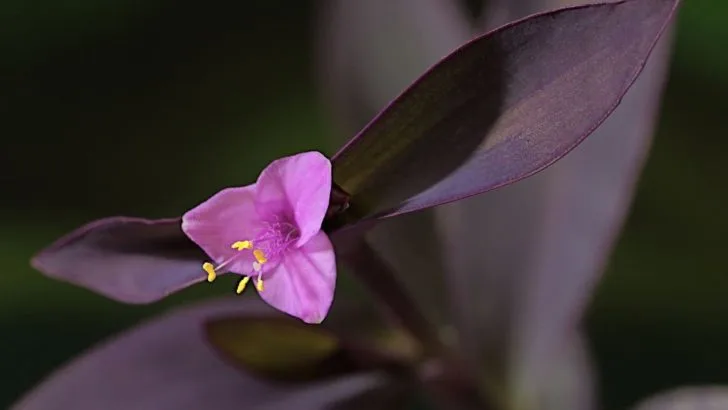In a garden full of green plants, why don’t you break the monotony with a purple queen plant? The so-called tradescantia pallida purple heart plant will definitely steal your heart, that’s for sure. They don’t call them purple heart plants for no reason.
Its flowers are shaped like hearts and you’ll fall in love with it right away. But do purple queen plants deserve their throne in the botanic world? If you’re seeking for deep purple plants lately, this plant is all you want.
All you need is a full sun position in the garden. Add a couple of hanging baskets because you’ll want more than one and that is it. Its striking color will leave you breathless when you see it.
Let’s learn all about this plant if you’re already thinking about getting one for your yard.
About A Purple Queen Plant
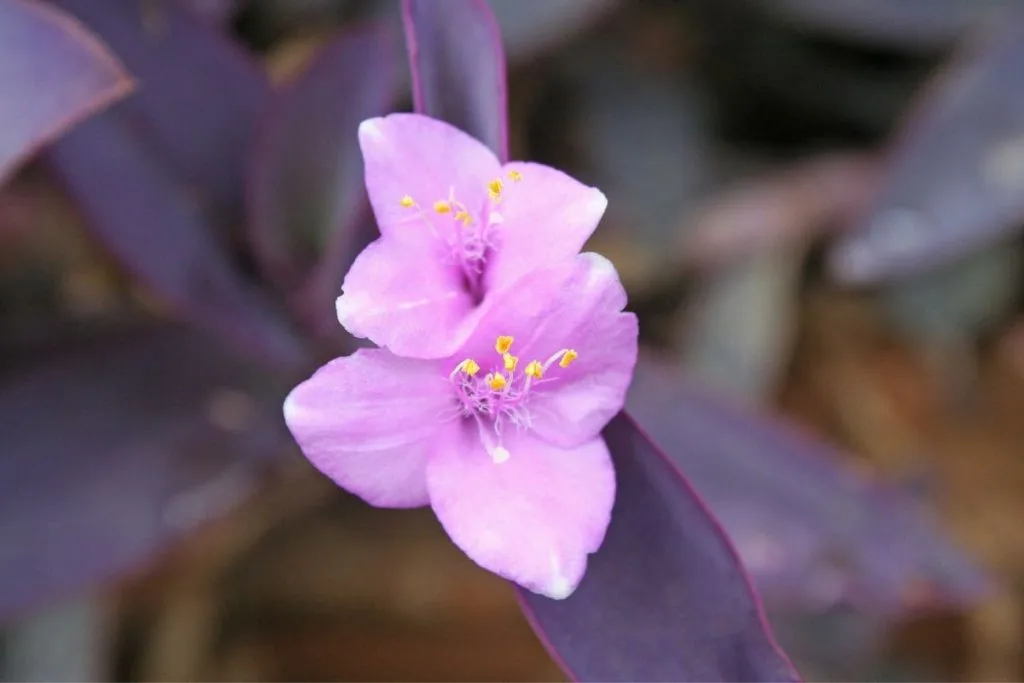
Before you learn tips for growing a purple heart and all it takes for its good health, let’s see some of its botanical features and growing habits. If you don’t like how to plant looks, no matter how easy its care guide is you won’t purchase it. But this right here will prove to you how amazing this plant is. Let’s check it out.
- Native habitat: Eastern Mexico
- Botanic name: tradescantia pallida purple, setcreasea purpurea
- Common names: purple heart plant, is called purple queen due to its glowing and classy look, purple spiderwort
- Family: spiderwort family
- Subfamily: –
- Flowers: small purple hearts-shaped flowers
- Leaf shape: lance-shaped leaves, purple leaves
- Toxicity: may cause skin irritation if you touch it without gloves
- Use/benefits: ground cover plants, houseplants, etc.
- Where to grow them: sunny location, large containers, directly in the ground, as a houseplant, in a container indoors, in the garden, avoid colder areas
- How to grow them: in a hanging basket, as ground cover plants, they’re one of the nicest hanging purple flowers for your home or terrace
Ultimate Care Guide For A Purple Queen Plant
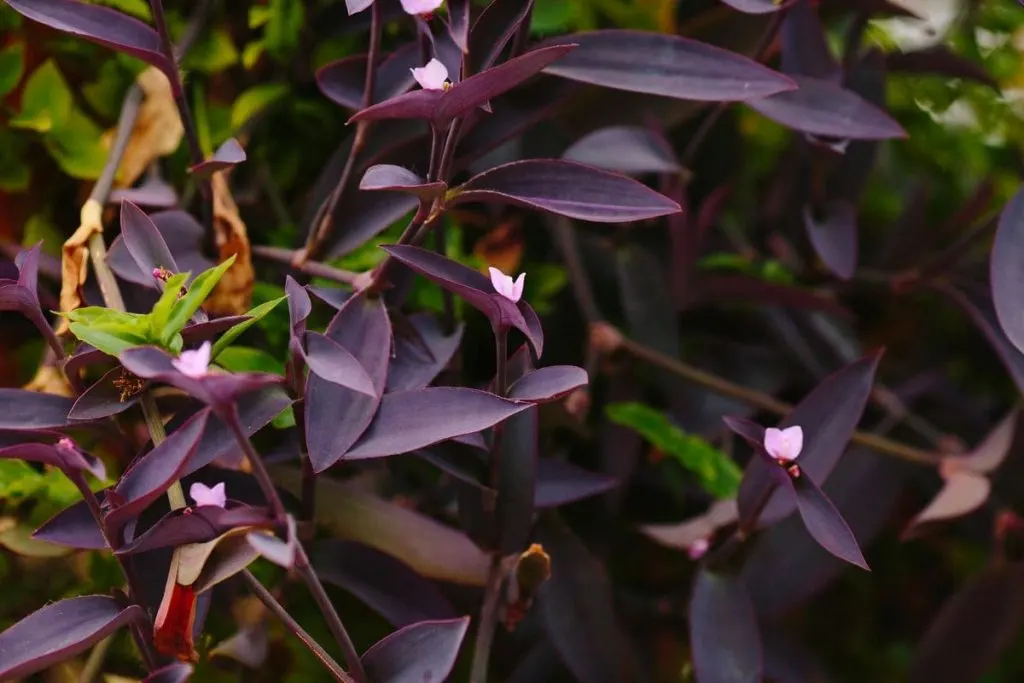
How to cut its stems? How to treat these plants in summer, and how to treat them in the winter? What pots to use for it?
What can cause root rot? We will answer all these questions below and much more. Let’s check it out.
Light Conditions
The purple queen plant is not very demanding when it comes to light. You immediately assume, I’m sure, that it is not as hardy as plants with green leaves.
Although it has deep purple leaves, the plant is much less hardy than other plants in your garden. It will grow well in part shade only after lots of direct sunlight in the morning.
It is best to plant it near other flowers that will shade it already in the early afternoon. I know many friends who plant these plants under trees.
The branches allow the sun and direct sunlight to pass through, and at midday, they create an excellent shadow.
If you still like hedge ground covers, then you will have to be careful with the choice of location.
Too much sun does a lot of damage to its leaves. Some people also use umbrellas for plants, so why not try that?
Plant shade umbrellas are not such a new invention. They’re part of the gardening world for years now. We sincerely advise you to try them, you won’t be disappointed.
Watering Schedule
Nor is their watering schedule difficult, ie demanding. I had this plant in my garden a few years ago.
It grew to such an extent that we had to cut it every 3 months. Water plays a huge role in the growth of this plant.
It is best to always have a bucket of water ready for watering in your garden. When you see it, you immediately know it’s time to water and you won’t forget it.
The plant is drought tolerant, so it will not die immediately without water, but any lack of water is reflected in its appearance.
The purple queen plant does not care what water you use. Every type of water is the same and it is grateful for each one.
If you use water from the garden tap, distilled water, or something else, it doesn’t matter.
At flowering time, use approximately 0.52 gallons of water per 10.7 square feet. As the square feet get bigger, increase the amount of water based on the surface of the land you are watering.
Soil Type
I will be completely honest with you. When I planted this plant in my garden, I didn’t pay any attention to the type of soil.
During that period, our garden had regular soil, without any supplements, and was not very favorable for the growth of flowers.
The most important this for this plant is that the soil is well-draining soil. Without frequent watering, this soil might save your plant at tough times.
However, I wanted to plant something quickly and directly into the ground without much thought.
After a little digging and “softening” of the soil, I planted it in the ground in our garden. To my surprise, the plant responded well and started growing.
I fertilized it in the spring, but I never changed the soil or added anything else. This tells you that this plant can thrive in ordinary soil without much care.
All you need is a lot of water and that’s it! In no time you have the perfect plant for the garden.
Temperature
This plant is not interested in warm temperatures as much as it is afraid of frost and hunger. In December, I was late with the protection of this plant and I noticed it immediately.
The plant had a strange appearance, the leaves looked “hung” and I realized that the frost had done its work. What you can do then is protect the plant.
Go to a gardening shop and buy nylon or something else they recommend for protecting plants in winter.
It saved my plant, so I’m sure it can save yours too. Temperatures between 60 and 70 F normally suit the plant best.
Humidity
It blooms best in places where the average air humidity is between 40 and 50 percent. The humidity of 60 and 70 percent will affect its appearance.
The plant “shrinks” and its leaves look droopy. If you want to avoid this look, think about it before purchasing.
Fertilizer
I fertilized my purple queen plant with regular organic matter for house plants. It worked great and the plant bloomed even ahead of time. If you want an ideal fertilizer, then you can get granular fertilizer.
Pruning
Pruning is done when you want to reduce the size of the plant. I trimmed mine at least 5 or 6 times while I had it because it grew so fast!
The plant really appreciates that pruning. I had the feeling that when I cut off 4.5 twigs, 10 would appear later on.
The plant appreciates pruning, especially when you remove even the smallest damage. After the flowering period, you can prune it even then to encourage it to bloom the following season.
Propagation
It is up to you to decide whether to propagate the plant in water or in soil. In water, the plant takes much longer to germinate, while in the soil it germinates in 3-4 weeks.
Therefore, we advise you to propagate in the soil. Cut the cuttings of a healthy plant, i.e. the twigs at an angle of 45 degrees, and place it in well-drained soil with a little fertilizer.
Put it in a sunny position and that’s it! Wait for germination while watering it occasionally.
In Case We Missed Something Above
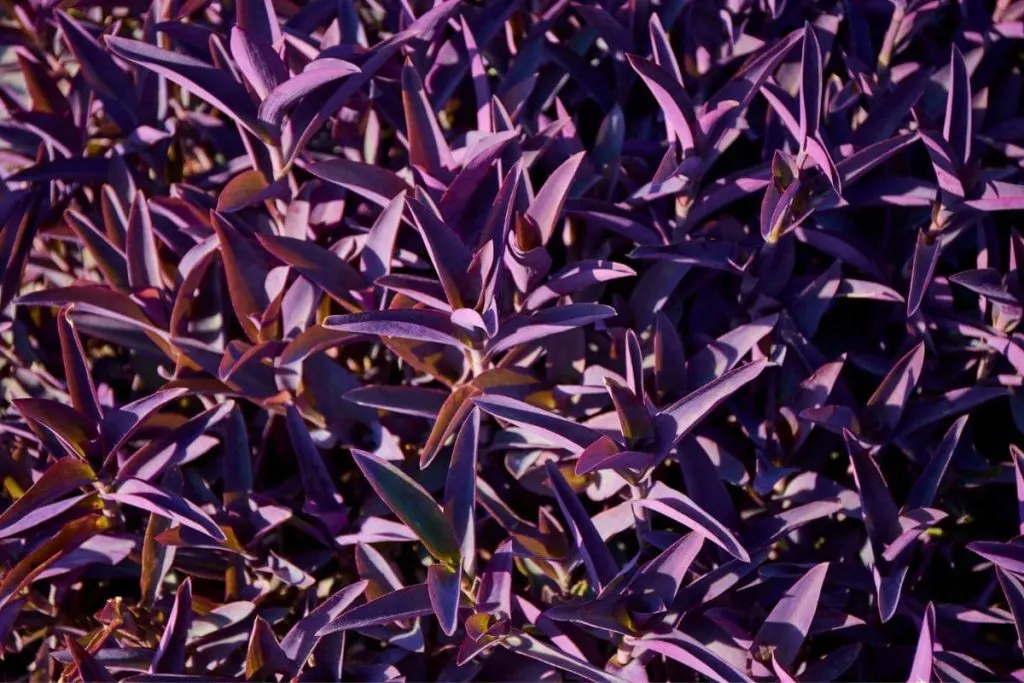
Before you start thinking we still owe you some information about this plant, give us a second. In this section below, we prepared for you some questions about this plant you might’ve been asking yourself.
With this section, we’re sure, you’ll be able to make a whole picture of this plant wrapped up in your head.
You’ll be able to decide whether to purchase this plant or not. If you already have it, it might come in handy too.
Will The Purple Queen Plant Come Back Every Year?
Its foliage is quite sensitive and it will usually die during cold temperatures. Even a bit of frost can kill this plant.
But that doesn’t mean plants won’t return again next year. Most of the queen plants come back in the springtime if you do everything in order.
Do Purple Queens Spread?
A plant is a spreading plant, but it’s not invasive like some plants. Some tradescantia types such as oyster plants are invasive, but you don’t have to worry about this one.
Even though they’re not invasive, at the point when they start growing, you’ll wish they were since they’ll look amazing.
Is The Purple Queen Plant A Perennial?
Purple queen plants are perennial plants. They’re often grown outdoors as ground cover plants and rarely as purple house plants.
Purple queen plant is among the most beautiful perennial houseplants too. Due to its look, I’m sure you’re not surprised.
In Which USDA Zone Do Purple Queen Plants Grow?
Purple queen plants grow the best in the USDA zones 11-12.
They can grow in a bit colder regions too, but cold hardy regions such as 6 and 7 really don’t suit them well. 8 is the lowest hardy zone you should risk it with this plant.
Are Purple Queen And purple Hearts The Same Plant?
They are the same plant coming from a spiderwort family. In case you want bigger plants with beautiful purple flowers, make sure you check out the post about trees with purple flowers.
Even though people mix them a lot, there is an obvious difference between the two of these plants.
Wrapping Up
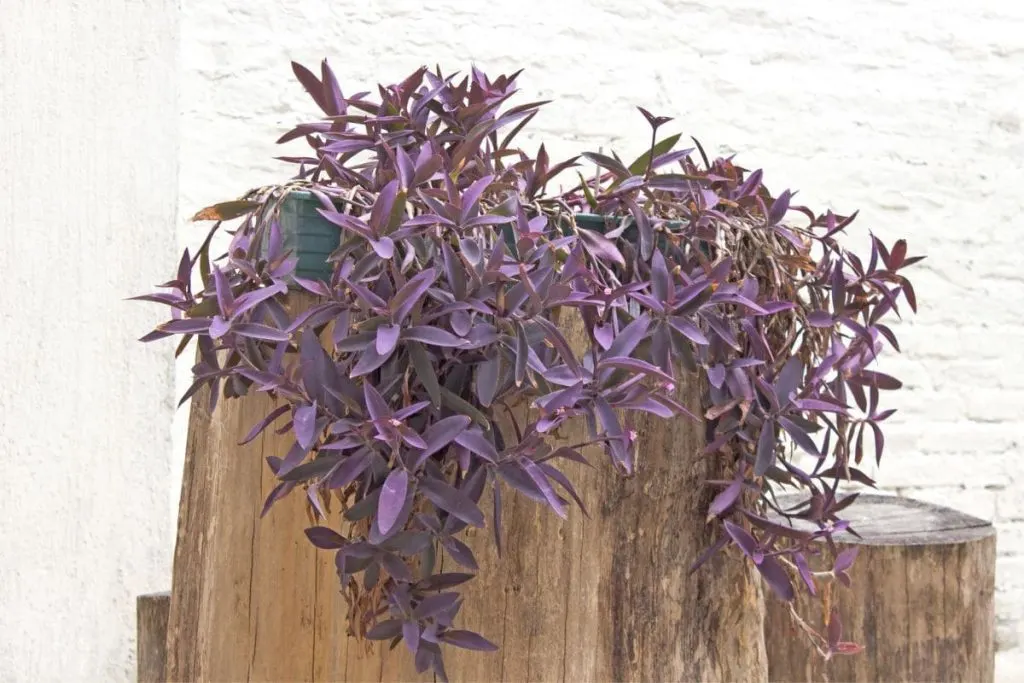
We’ve reached the end of today’s article about the purple queen plant. Should we sum it up so we make sure you definitely know all about this plant? Let’s do it then.
Purple queen plants grow well in partial shade in the afternoon hours, with full sun position in the morning.
To promote more compact growth and encourage branching, prune the plant in the springtime, even with the tinniest damage. Add organic matter before its flowering time.
It is easily propagated with stem cuttings. Do not fertilize the plant in the winter. When expecting new growth, regular watering should be done every 7 days. You may destroy its roots with too much water, avoid it.
We hope you enjoyed our today’s article. Happy planting time. We hope your garden will be full of purple queen plants next spring. See you tomorrow with similar topics!

